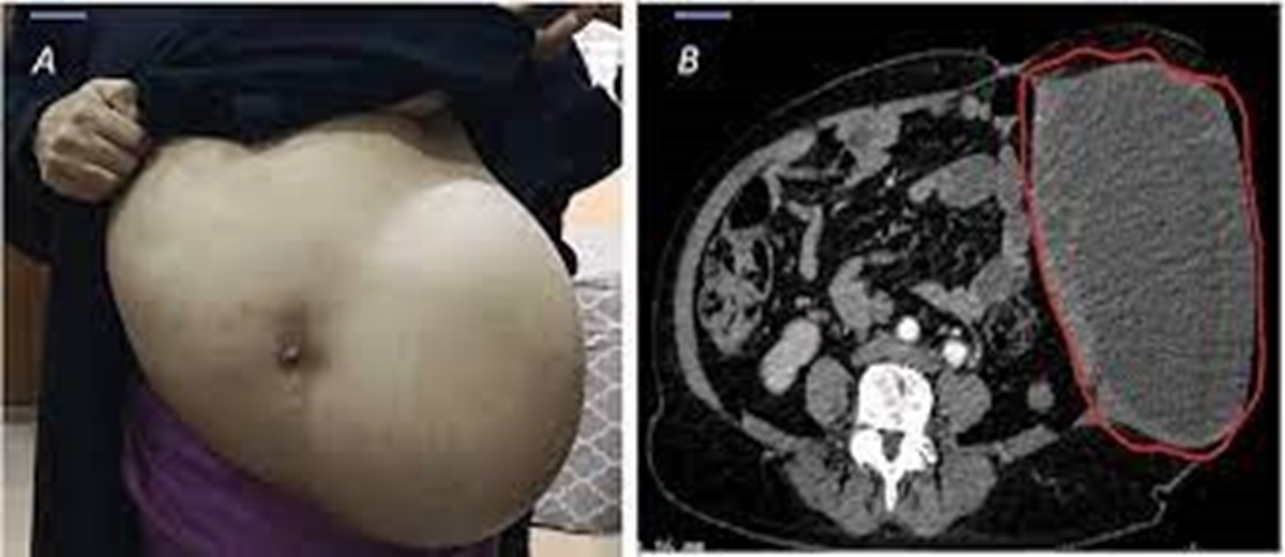A nurse is caring for a toddler whose parent states that the child has a mass in his abdominal area and his urine is a pink color. Which of the following actions is the nurse’s priority?
Schedule the child for an abdominal ultrasound.
Instruct the parent to avoid pressing on the abdominal area.
Determine if the child is having pain.
Obtain a urine specimen for a urinalysis.
The Correct Answer is B
The correct answer is choice B: Instruct the parent to avoid pressing on the abdominal area.
Rationale for each choice:
- Choice A: Schedule the child for an abdominal ultrasound. While an ultrasound may be necessary for further diagnosis, it is not the immediate priority. The child’s symptoms suggest a possible Wilms’ tumor, a type of kidney cancer that primarily affects children. An ultrasound can help confirm this diagnosis, but it should not be the first action.
- Choice B: Instruct the parent to avoid pressing on the abdominal area. This is the correct answer. If the child has a Wilms’ tumor, pressing on the abdominal area could potentially cause the cancer to spread. Therefore, it is crucial to avoid any unnecessary pressure on the abdomen until further medical evaluation can be performed.
- Choice C: Determine if the child is having pain. While assessing for pain is an important part of nursing care, it is not the immediate priority in this situation. The child’s symptoms need urgent medical attention, and assessing for pain will not provide the necessary information to guide immediate care.
- Choice D: Obtain a urine specimen for a urinalysis. Although a urinalysis can provide valuable information about a patient’s health, it is not the immediate priority in this situation. The child’s symptoms suggest a possible Wilms’ tumor, which requires immediate medical attention. A urinalysis may be part of the diagnostic process, but it should not be the first action taken.
Nursing Test Bank
Naxlex Comprehensive Predictor Exams
Related Questions
Correct Answer is B
Explanation
Choice A rationale
Jaundice, a yellowing of the skin and eyes, is not typically a symptom of Wilms’ tumor. It is more commonly associated with conditions that cause liver dysfunction.
Choice B rationale
An abdominal mass is one of the most common symptoms of Wilms’ tumor. Parents or healthcare providers may feel a lump or swelling in the child’s abdomen.
Choice C rationale
Swollen joints are not a typical symptom of Wilms’ tumor. They are more commonly associated with conditions that affect the joints, such as juvenile arthritis.
Choice D rationale
Diarrhea is not a typical symptom of Wilms’ tumor. It is more commonly a symptom of gastrointestinal illnesses.

Correct Answer is B
Explanation
Choice A rationale
Hypotension, or low blood pressure, is not typically associated with nephrotic syndrome. In fact, some patients with nephrotic syndrome may experience high blood pressure.
Choice B rationale
Generalized edema, or swelling, is a common characteristic of nephrotic syndrome. It occurs due to the loss of proteins in the urine, which leads to a decrease in the amount of protein in the blood. This decrease in blood protein levels causes fluid to move from the blood vessels into the tissues, leading to swelling.
Choice C rationale
Increased urinary output is not typically associated with nephrotic syndrome. In fact, some patients may experience decreased urine output.
Choice D rationale
Bright red blood in the urine is not a typical symptom of nephrotic syndrome. Hematuria, or blood in the urine, when present in nephrotic syndrome, is usually microscopic and not visible to the naked eye.
Whether you are a student looking to ace your exams or a practicing nurse seeking to enhance your expertise , our nursing education contents will empower you with the confidence and competence to make a difference in the lives of patients and become a respected leader in the healthcare field.
Visit Naxlex, invest in your future and unlock endless possibilities with our unparalleled nursing education contents today
Report Wrong Answer on the Current Question
Do you disagree with the answer? If yes, what is your expected answer? Explain.
Kindly be descriptive with the issue you are facing.
